This build has been archived by the author. They are no longer supporting nor updating this build and it may have become outdated. As such, voting and commenting have been disabled and it no longer appears in regular search results.
We recommend you take a look at this author's other builds.
This guide has not yet been updated for the current season. Please keep this in mind while reading. You can see the most recently updated guides on the browse guides page
 Thank You!
Thank You!
Your votes and comments encourage our guide authors to continue
creating helpful guides for the League of Legends community.
Choose Champion Build:
-
Bruiser Nocturne
-
Assassin Nocturne
Recommended Items
Runes: Conqueror (Meta Rune)


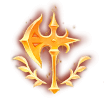
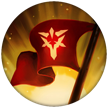
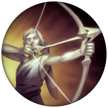
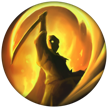

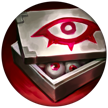
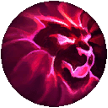
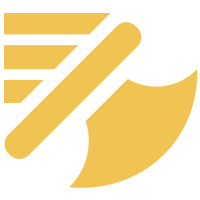


+10% Attack Speed
+9 Adaptive (5.4 AD or 9 AP)
+6 Armor
Spells:

Flash

Smite
Items
Threats & Synergies
 Threats
Threats
 Synergies
Synergies
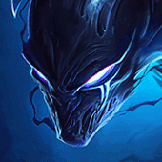 Show All
Show All
 Extreme Threats
Extreme Threats

 Ideal Synergies
Ideal Synergies

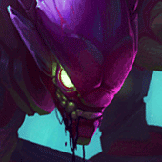
Kha'Zix
This champ is currently overpowered so now he wins this matchup. He has the sticking power to kill you and his Q is really low cooldown so your shield won't save you 1v1. Try to fight near allied minions, champions or towers to avoid isolation. Don't ult him unless his Leap is on cooldown.

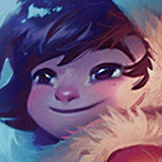
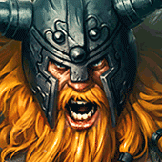
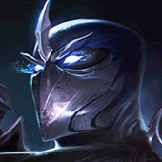
Shen
Great synergy whether he's top lane or support. If you can coordinate so Shen ults you as you dash in with your ult, you'll get a shield to help you survive and Shen gets a free gap-close and can taunt your target as soon as you get close. He also helps offset your low CC and durability.

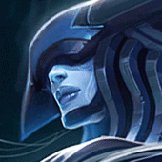
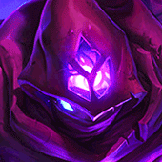
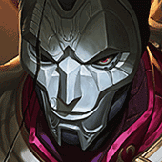
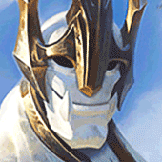
 Synergies
Synergies

Shen
Great synergy whether he's top lane or support. If you can coordinate so Shen ults you as you dash in with your ult, you'll get a shield to help you survive and Shen gets a free gap-close and can taunt your target as soon as you get close. He also helps offset your low CC and durability.






 |
Hi, I'm PsiGuard and welcome to my |

 |
Nocturne's main weaknesses are his lack of utility and tankiness. He makes for a fairly mediocre frontliner and lacks reliable crowd control to lock down enemies or initiate fights himself. These weaknesses make him an unreliable team fighter, as he can only really go all-in on a backliner and doesn't offer anything else to his team. Against teams with high peel or mobility, Nocturne can have trouble securing kills and impacting the game. Nocturne's early game ganks are also unremarkable, as he relies mostly on his ultimate to reliably reach his targets. |

| You can one-trick Nocturne if you want, but picking him every game will sometimes put you in a disadvantageous situation. Nocturne works well as a counterpick to the enemy team composition and/or as a part of a team composition that focuses on picks and global pressure. In this chapter I'll cover the factors you should consider before locking in Nocturne. |

- 1-3 magic damage threats
- Multiple sources of crowd control
- At least one frontline champion
- At least one source of primary engage
- Bonus: Global abilities
- Bonus: 1-2 split-pushers

|

|

|

|

|
 Baron
when needed. This comp has weaker split-pushing and no special global abilities, but
Baron
when needed. This comp has weaker split-pushing and no special global abilities, but

|

|

|

|

|

|

|

|

|

|

Enemies with crowd control, shields and defensive abilities can make it difficult to kill enemy carries when they're around. Keep an eye out for spells like Champions with high mobility, untargetability or other methods of self-defense can be especially difficult to deal with. Nocturne needs to be able to kill isolated carries, so if the carry is too slippery to catch, you can run out of options to make plays without allied CC to set you up. If the enemy team includes, tanky champions, strong duelists and/or slippery carries, it might be better to pick a different champion. 
|

| Starting Order |

| Start Q at level 1. It's the best skill for level 1 fights and it also gives you a slightly faster clear than W start. |

| Take W at level 2. The passive attack speed will improve your clear speed. You generally shouldn't gank at level 2, so you don't need E yet. |
| Max Order |

| Max Q first. Both the skillshot and the AD steroid are important enough that you need it maxed to keep up in damage. |

|
Max E second (usually). If you're not sure what to max second, this is the safest bet. The longer fear duration works well in any fights involving your teammates and it's strong versus ranged champions, or melee champions with escapes or high DPS. Examples include |

|
Max W second against certain melee champions. Melee champions without high sustained damage or slippery escapes are vulnerable to being rushed down while their abilities are on cooldown. Examples include |

| Max R whenever possible. As is the case with most champions, your ultimate is always worth a point. |
| Tips & Tricks |
- Hit all the monsters in each camp with
 Umbra Blades to maximize your sustain.
Umbra Blades to maximize your sustain. - Use
 Duskbringer before triggering
Duskbringer before triggering  Umbra Blades when possible in order to increase the amount of AoE damage using Duskbringer's steroid.
Umbra Blades when possible in order to increase the amount of AoE damage using Duskbringer's steroid. - A single attack in a large minion wave can help you heal up after a gank.
 Umbra Blades only applies on-hit effects to the primary attack target.
Umbra Blades only applies on-hit effects to the primary attack target.
|
| Tips & Tricks |
- Stand on the trail whenever you're clearing jungle camps, pushing minion waves or hitting towers.
- Get close to enemies before casting Q when possible in order to prevent them from dodging the skillshot.
- If your target is very likely to use a movement ability soon, you may want to save Q until after they blink/dash so you don't miss.
- The dusk trail is visible through stealth and fog of war. You won't have direct vision, but you can track unseen targets for as long as the trail lasts.
|
| Tips & Tricks |
- Try to block crowd control or high damage spells when possible.
- You can use your spell shield to block dangerous skillshots (

 ) for your teammates.
) for your teammates. - At close range, you'll need to read your opponent and predict when they will cast certain abilities. At longer ranges you can wait until you see the ability before pressing W.
- Certain spells like
 Requiem and
Requiem and  Death Mark are super telegraphed and easy to block if you save the cooldown for them.
Death Mark are super telegraphed and easy to block if you save the cooldown for them. - When chasing an enemy, watch for their character model to turns towards you. This is a good indicator that they're about to cast an ability on you.
- The spell shield lasts for almost the full tether duration of
 Unspeakable Horror (1.5s shield, 2s tether).
Unspeakable Horror (1.5s shield, 2s tether). - Some spells like
 Hemoplague and
Hemoplague and  Death Mark can only be blocked if you shield the initial spell hit. Others like
Death Mark can only be blocked if you shield the initial spell hit. Others like  Requiem and
Requiem and  Time Bomb can only be blocked if you shield the detonation. Still others like
Time Bomb can only be blocked if you shield the detonation. Still others like  Wall of Pain and
Wall of Pain and  Glacial Storm can't be blocked at all. Check LoL Wiki and click the Ability Details tab on any ability to see if you can spell shield it.
Glacial Storm can't be blocked at all. Check LoL Wiki and click the Ability Details tab on any ability to see if you can spell shield it.  Shroud of Darkness has no cast time and can be freely cast without interrupting movement, attacks or other spells.
Shroud of Darkness has no cast time and can be freely cast without interrupting movement, attacks or other spells.
|
| Tips & Tricks |
- Nocturne gains 335 movement speed towards any Fleeing enemy, even if he isn't the source of the CC. If you have a
 Fiddlesticks,
Fiddlesticks,  Urgot or
Urgot or  Hecarim, you can take advantage of their Flee effects as well.
Hecarim, you can take advantage of their Flee effects as well. - Fearing the large monster in a jungle camp will lower the damage you take while jungling, but it's mana-intensive. It's generally only worth it if you have a blue buff or at least a
 Hunter's Talisman.
Hunter's Talisman. - Epic monsters like Baron and Dragon are not disabled by this spell.
- It's easier to maintain the tether during an allied CC spell. Try to coordinate with your teammates and have them use their CC to help you get your Flee off.
 Unspeakable Horror has no cast time and can be freely cast without interrupting movement, attacks or other spells.
Unspeakable Horror has no cast time and can be freely cast without interrupting movement, attacks or other spells.- Spell shields will block the initial cast of the spell but not the Flee effect if the target is already tethered.
- It takes about 0.25 seconds after the target leaves the tether range for the tether to break. If the target leaves the tether range in the last split-second of the spell, they can still be CCd.
- Take account of your target's mobility spells, CCs and knockbacks. Use
 Shroud of Darkness and/or
Shroud of Darkness and/or  Flash to outplay your target and stay close enough for the tether to finish.
Flash to outplay your target and stay close enough for the tether to finish.
|
| Tips & Tricks |
- You have the most kill potential if you dash to an enemy champion that has already used their mobility spells.
- The global vision reduction can prevent the enemy team from coordinating when team fighting near brushes. They will also lose all ward vision, including
 Control Wards.
Control Wards. - The dash cannot be interrupted by CC, but you may still be CCd upon arrival if the duration of the CC is long enough.
- You can cast any spell during the
 Paranoia dash, including all of your basic abilities, items and summoner spells. Cast Q right before you hit your target to avoid the Q cast time.
Paranoia dash, including all of your basic abilities, items and summoner spells. Cast Q right before you hit your target to avoid the Q cast time. - Both parts of the spell can be blocked by spell shields. This means you can break an enemy spell shield with the first cast and then engage on them with the second cast.

 |
Wolves, Raptors Spawn At: 1:30 Respawn Time: 2:00 Gromp, Krugs Spawn At: 1:42 Respawn Time: 2:00 Buffs (Blue Sentinel, Red Brambleback) Spawn At: 1:30 Respawn Time: 5:00 Rift Scuttlers (in river) Spawn At: 3:15 Respawn Time: 2:30 Rift Herald (in Baron pit) Spawns At: 8:00 Respawn time: 6:00 Despawns At: 19:45 (19:55 if in combat) |
 |
Elemental Drakes Spawns At: 5:00 Respawn Time: 5:00 |
 |
Elder Dragon Spawns: 6:00 after a team gets 4 Drakes Respawn Time: 6:00 |
 |
Baron Nashor Spawns At: 20:00 Respawn Time: 6:00 |

| Plants are stationary, neutral units with 1 health. They can be destroyed with a basic attack to trigger an effect. Three different types of plants will spawn in the jungle and river. Their spawn timers and locations vary slightly but for the most part they are fairly predictable. The first spawn locations for all plants are predetermined. |

Blast Cones - Side Lanes
 |
 |
Between 5:00 and 5:30, blast cones will spawn near the side lanes on each side of the map. These cones are useful for accessing the river while avoiding likely ward spots. Bot laners will occasionally ward on top of this blast cone, but top laners rarely do.
You can use both of these cones regardless of which team you're on. One of the cones will be in the enemy jungle, but you can use it to come from an unexpected angle and give the enemy laners less time to react. If the cone is on your side, it adds an option for ganking through the river. Wait until the enemy laner(s) are in a vulnerable position (trading, going for a last-hit) and then use the cone to hop the wall. Even if the river bush itself is warded, you can often surprise the target by how quickly you enter the lane.
You can also use these cones to escape the enemy blue-side jungle after an invade. Red-side top laners will often use the blast cone in the blue jungle to escape over the wall after a tower dive or a proxy.
Blast Cones - River Pits
 |
 |
These blast cones grant river access through the dragon and baron pits. Be aware of these cones while fighting either of these objectives, since the enemy can use them to hop the wall and try to steal. If you're fighting an epic monster, it's often a good idea to detonate these cones ahead of time (unless you're trying to sneak it).
After these cones spawn (5:00-5:30) you can use them to enter the river without pathing through the tribush or the ramp by raptors. These areas are often warded, so entering the river through one of these pits is a good way to get around wards as long as the enemy hasn't taken the Scuttler on that side of the river. A good use for this gank route is when the nearby enemy side lane is overextended and has likely warded the tribush. You can also use this cone to get past a ward at your Raptors and gank the enemy mid laner.
One last use for these blast cones are to try and sneak an objective. This is more applicable to dragon than baron most games, but if your team is coordinated you can sneak baron as well. The enemy will have to have a ward directly in the pit in order to see you fighting the objective (or they have to walk past it), so you're safe to sneak it even if they've taken the Scuttler in the river.
In an Infernal Rift game (3rd Dragon is Infernal), additional Blast Cones will spawn near each tri-bush by Gromp, by the Wolf Camp, in front of each base's gates and in the alcoves.
Scryer's Blooms

Scryer's Blooms are great tools for scouting and clearing out enemy vision, however, they also reveal your position on the map. Do not use a Scryer's Bloom right before a gank, as it'll signal your location to the enemy team. The best time to use a Scryer's Bloom is after you're spotted (maybe you cleared a ward or pulled off a successful gank) since the enemy team already knows where you are. It's also important not to use the enemy Scryer's Bloom before counter-jungling, as you may be collapsed on if you go for an enemy camp afterwards. Instead, steal what camps you can and use the plant on the way out of the enemy jungle if appropriate.
In general you want to aim the Scrying effect in the direction of enemy wards based on your expectations of likely ward spots. Aiming them towards one of the nearby lanes can let you clear out their defensive vision and force them to play more cautiously. You can also use the cone of vision to check the enemy jungle to see if their camps are up or if the enemy jungler is present. Both the vision and ward-disabling effects are useful, so use your judgement to decide where the best place to aim the cone is.
One trick I like to do is to try a gank on a lane and judge the enemy laner's behavior to see if the bush is warded. If they back off, I'll loop back to the nearby Scryer's Bloom and use it to clear out the enemy ward. If it's not warded, then I can go ahead with the gank. Either way, it puts pressure on the laner since they're either ganked directly or have their vision cleared and won't know if you're sticking around for a gank or not.
Late game, Scryer's Blooms are useful tools for gaining vision of the river and clearing out wards around baron and dragon. Use the blooms to check dangerous areas and remove enemy wards if it's safe to do so. If you're going to do baron or dragon, you may want to clear out the enemy Scryer's Bloom so they can't check the area while you're doing it.
In a Cloud Rift game (3rd Dragon is Cloud), additional Scryer's Blooms will spawn in front of each base's gates and in front of each tri-brush in the river.

How to Ward Safely
If you've played League of Legends, you've probably died trying to ward a dark part of the map. It's an easy trap to fall into, since it's natural to want to light up dangerous areas of the map.
In order to avoid this common pitfall, it's important to look at the map and go through a quick mental check to decide if it's safe to ward and how deep you can extend for vision.
2. Do my nearby laners have lane priority?
3. Have I seen the enemy jungler elsewhere recently?
4. Do I have any allies nearby that can rotate to help me ward safely?
If you see the enemy jungler ganking the opposite side of the map, that's often a good time to get some deep vision in their jungle. If the enemy mid laner has priority and is missing, you may have to wait until they show on the map again before entering the river.
Some of these considerations will depend on which champions are on the enemy team. Burst mages and assassins are much more dangerous when they're missing, and some enemies like
My rule of thumb is this: If I try to place the ward I want to place and every enemy that's missing is sitting there, will I die? If I could die, I'll wait for a safer opportunity or get allies to help me place down vision. This also means that
You'll likely still make some mistakes from time to time, but if you consciously ask yourself if it's safe before warding, you're much more likely to actually learn from your errors and avoid similar situations in the future.
All that said, let's get on with some useful ward spots that every jungler should know.
Level 1 Wards
Level 1 wards can give you valuable information about enemy jungle pathing and potential invades. While it isn't necessary to ward early in every game, against unpredictable, aggressive or dangerous early game junglers it's a must.
Place your ward at roughly 0:50. This'll make your ward last long enough to grant you useful intel and you'll have time to recall and switch to
 |

|
Warding the enemy raptors at level 1 will give you crucial information about their early pathing. Watch the enemy side laners to see if they leashed, then keep an eye on your raptor ward to see if the enemy shows at raptors. If the enemy started at their red buff, they'll usually either do their Krugs second or walk past this ward. Either way, you'll have a better idea of where they can be in the near future.
 |

|
These pixel brush wards will help defend against invades or level 2 ganks if the enemy jungler paths from their first buff straight to the river, but they're not quite as valuable as the raptor ward. Place your ward here if you can't get to the enemy raptors safely.
Another reason to use this spot is if you'll be starting at your Blue buff, since you can ward the opposite side of the river to spot potential invades on your Red buff. Seeing an invade ahead of time will give you the chance to respond and invade the enemy jungle at the same time, instead of arriving to your red-side jungle only to find it's all been taken.
Trinket Swapping
In patch 9.24, Riot made the following changes to Trinket swapping:
| "When you swap trinkets, the new cooldown is based on time since you last used any trinket. Any remaining Stealth Ward ammo is converted into its value in cooldown for these purposes." |
As a consequence of this change, switching to
Switching your trinket back and forth is no longer as powerful as it was previously, but you can still do so based on how you've been using your trinket recently. Personally, I often find myself switching to
The important lesson here is to use up your warding charges before switching to
Jungle Protection Wards
 |

|
This is one of the most defensible ward positions available to you. The two purposes of this ward are to spot the enemy jungler invading your red buff / raptors, and to spot the enemy jungler or mid laner roaming to a side lane through your jungle. Use this position if you'll have trouble defending wards in river and you're concerned about potential invades or mid roams.
 |

|
This is a weaker version of the pixel brush ward, but it's less likely to be spotted and cleared by the enemy jungler. Use this spot if the enemy jungler or mid laner is likely to clear the pixel brush often.
Lane Protection Wards
Note: Use
 |

|
This spots are quite valuable for
 |

|
These wards are valuable against junglers like

This doesn't work as well on the bottom tribrush since the enemy bot laners will usually clear the ward with a
Jungle Tracking Wards
I'll cover general jungle tracking techniques a bit later on in the guide. Here are a few ward placements that'll help you gain more information on the enemy jungler's whereabouts. Keep in mind that some of these wards are riskier to place, so make sure you're safe before going for deep vision.
 |

|
This is a riskier but higher value version of the level 1 raptor ward. If possible, deep warding the enemy raptor brush will give you great vision of their pathing and help you determine which side of the map they'll be pressuring. If you can't safely ward the bush, the regular ward in front of the raptor camp is fine.
 |

|
While this is less valuable than warding the enemy raptors since there are more paths through blue side jungle, it's still a useful ward since it'll spot the enemy jungler if they enter their jungle through mid and/or if they clear their wolves. These types of deep wards are especially helpful against post-6 gankers with stealth or semi-globals like
 |

|
This ward is good if the enemy red buff is up or if it's coming up soon. It's okay when red buff is down, but it's less likely to catch the enemy jungler walking past it since they'd have to be pathing to Krugs or towards top tribush, which are rarer locations for junglers to walk.
 |

|
This is better than the red buff ward since it covers one of the entrances to the blue-side jungle and an entrance to the river. You can also see if the enemy is doing Gromp. This ward will often catch lane ganks if the enemy jungler walks from their jungler to the lane instead of coming straight from base.
 |

|
While this isn't the most valuable spot for a
 |
 |
When you have both ward charges and the opportunity to safely invade the enemy jungle, be sure to leave behind some high value vision before you return to the river. Deep vision will give your team a huge advantage since it'll be much easier to track the enemy jungler and figure out where they can and can't gank.
You can cover nearly an entire quadrant of the enemy jungle with just two wards. Later in the game, you can invade a quadrant of the jungle with your support and they can ward these spots for you since you'll have
Vision Around Objectives
 |

|
These dual ward positions behind objective walls are useful for controlling vision and spotting enemies who may try to steal the objective from over the wall. If the enemy jungler is alive, it's very important to have this vision down before starting an objective. In some cases, you can pull dragon away from the pit to minimize the chance of a steal, but it's still good to have these areas warded.
 |

|
Warding inside of the Dragon or Baron pit will spot enemy wards that are placed inside the pit, usually over the wall. This means that as blue team, you should place your ward inside the Baron pit, and red team should place theirs inside the Dragon pit.
 |

|
It's not necessary to place the wards inside the pit if the enemy can't ward over the wall. Instead, just use an
Adapting Wardlines
Your team's vision should change throughout the game, based on which team has map control. The more map control you and your team have, the deeper you should attempt to set up vision. A winning team with vision in the enemy jungle is a recipe for success, since it'll allow them to choke the enemy out of jungle resources and dominate neutral objectives.
If your team is winning the game, has a split-pusher advantage, and/or is winning team fights, move your vision up as far as you can, safely. Push out waves and get your teammates to help you ward and de-ward around objectives and the enemy jungle.
If your team is losing the game, you'll need to ward more conservatively. Hiding bits of vision in your own jungle can help you push out more safely and pick up more jungle camps to farm without getting picked off. Getting vision of Baron is crucial, since you'll need to know if the enemy is starting it. Sweeping enemy wards out of your jungle and placing some sneaky

My teammates and I ward defensively since we've been pushed in and have lost some map control. This lets us farm the jungle, rotate between lanes and move up to objectives more safely. |

As my team gains map control, we ward the enemy jungle in order to siege safely, deny jungle camps from the enemy team, and catch anyone who tries to ward Baron once it spawns. |
A good rule of thumb is that your vision should be slightly ahead of where your team will be on the map. If your team is trying to take Baron, placing vision in the enemy top-side jungle is a good idea. If you're clearing super minions in your base, you'll want to set up shallower vision and clear a safe path towards Baron or Dragon. If you're sieging towers after taking Baron, ward the enemy jungle between the lanes that you're pressuring, so you'll be able to spot any rotations or sneaky flanks.
You can only do so much as one person, especially since you usually won't have a

 |
Blue: Kite back every 2-3 attacks (don't leave your dusk trail though). Cast |
 |
Gromp: Kite after every attack for the first 3 attacks (Gromp has higher AS for its initial attacks). Cast |
 |
Wolves: Cast |
 |
Raptors: Cast |
 |
Red: Kite back every 3 attacks when possible (don't leave your dusk trail though). Cast |
 |
Krugs: Focus the biggest Krug first (use |

Standard Route (Red Start)
Red,
 Krugs, Raptors, (Possible gank mid) Wolves, Blue
Krugs, Raptors, (Possible gank mid) Wolves, BlueTHEN
 nearby Scuttle
nearby ScuttleOR
 Gromp, nearby Scuttle
Gromp, nearby ScuttleOR
 Gromp, Recall, opposite Scuttle: This is the route I use most often, as you can take advantage of Nocturne's powerful AoE damage and get a leash on Red from your side lane to clear faster.
Gromp, Recall, opposite Scuttle: This is the route I use most often, as you can take advantage of Nocturne's powerful AoE damage and get a leash on Red from your side lane to clear faster.- If you see a gank opportunity mid after getting level 3 from Raptors, you can swing through mid for a gank.
- If you have a matchup advantage and lane priority, you can contest scuttle on spawn after 5 camps.
- If you'd rather avoid the enemy jungler (no priority or bad matchup), take Gromp to hit level 4, then determine which scuttle the enemy jungler will take and take the opposite one (they'll usually take the opposite scuttle to where they started).
Leashless Route (Wolves Start)
Wolves,
 Red, Krugs: This is a leashless route you can use to get level 3 without showing your starting location, and also allowing you to path towards your Red.
Red, Krugs: This is a leashless route you can use to get level 3 without showing your starting location, and also allowing you to path towards your Red.- Start Q and focus the large wolf, casting Q twice on the first camp.
- After hitting level 3 off Krugs, you can:
- Gank the nearby side lane.
- Invade the enemy Blue jungle.
- Clear your Raptors and then contest either scuttle.
- If you contested the scuttle near your Raptors, you can transition gank mid and try to get the other scuttle.
- If you contested the scuttle near your Blue, you can clear Blue, Wolves and Gromp afterwards, then Recall and head to your Krugs for a full clear.
Situational Route (Blue Start)
Blue,
 Gromp, Wolves, Raptors, Red,
Gromp, Wolves, Raptors, Red,
 Scuttle: This is an option for a blue start, though you'll take more damage clearing this direction. I recommend getting a bot lane leash if you plan on starting blue.
Scuttle: This is an option for a blue start, though you'll take more damage clearing this direction. I recommend getting a bot lane leash if you plan on starting blue.

Have you ever walked into river to take the scuttle crab, only to be met by 2-3 members of the enemy team? Did you die and feel the urge to blame your dumb laners for not coming to help you? Well it turns out there's a guaranteed way to ensure this never happens again! It's called checking Lane Priority, and it's really easy once you build the habit.
Lane priority just means whether your teammates can rotate to help you before the enemy laners can. Champions with lane priority are usually pushed to the enemy turret and/or stronger than their lane opponent, so they can fight them if they try to rotate. Priority will shift as the minion waves push back and forth, but some champions will have more priority on average than others.
Strong laners like
If you don't have lane priority and/or you can't fight the enemy jungler, the best thing you can do is find out which scuttle they're going for and take the opposite one. Sometimes you'll be pathing in the same direction as the enemy jungler and they'll have the ability to take both scuttlers. In these cases, just make sure you're clearing all of your camps and you'll be able to catch up. It's better to stay alive and lose out on the first scuttle than to die trying to contest it.

I can go for this scuttle since my mid and bot lane are pushing and can rotate to help me before the enemy laners. If I run into the enemy jungler, it'll be at worst a 1v1, or in the best case, a 4v1 in our team's favor. This lets me take the scuttle safely. |

I have to give up the bottom scuttle here since my bot lane is being pushed in and my team's |
The easiest way to ensure you always respect lane priority is to check the map every time you want to enter river. River is a highly contested area for both junglers and it's the most likely place you'll encounter a fight or be collapsed on. If you check your map for priority before entering river, you'll be able to make informed decisions about whether it's safe to contest scuttle or take any river fights.
Lane priority influences the safety of not just the river, but the jungle too. If you're invaded by the enemy, you'll want to keep the current lane states in mind when you decide whether or not to contest. In most cases your laners can help defend your jungle, but if there's a huge minion wave at their tower, chances are they're not going to help. The best course of action in these cases may be to concede that part of your jungle to the enemy and look for a gank or a counter-invade instead.
If you're invading the enemy jungle, the same thing applies. Try to invade when your laners are pushed in and have priority. You'll be much safer in the event you walk over a warded area or run into the enemy jungler. If you don't have priority, you may be collapsed on and killed, so it's definitely something you'll need to take into account before going for any invades.

A quick disclaimer before I begin this section. I generally don't recommend actively trying to vertical jungle on Nocturne, especially in solo queue. He doesn't have a lot of mobility to keep him safe in the enemy jungle and this jungle style is more conducive to stronger early game junglers with good ganks. That said, it's still a good idea to learn what vertical jungling is so you can recognize when it's happening and you'll know how to respond appropriately. With that out of the way, let's dig into this topic! :)
What Is Vertical Jungling?
Vertical jungling is when the map is split vertically (along mid lane) and both junglers farm half of their jungle and half of the enemy jungle. In most games, the river splits the map and junglers will usually farm on their own side of the river, but in some cases vertical jungling can be necessary or even ideal.
Vertical jungling is generally the result of an early invade. For example, if an
Another way to start vertical jungling is a team-wide invade at level 1, followed by the jungler starting at the enemy team's buff. This is generally riskier, but it can work if the invading team has strong level 1 champions. In the same way as a level 2 invade, this will force the opposing jungle to vertical jungle in order to avoid falling behind. If the enemy team does this to you, keep an eye on mid lane after the invade, since some junglers will start at your buff, then immediately gank mid and cross the map to defend their buff before you can invade them in turn.
Once you've confirmed the enemy is invading, you'll usually need to invade them at the same time. It's unlikely that you can go from your red buff to your blue buff in time to contest it, especially against fast clearing junglers with strong early games like
It's worth noting that vertical jungling is only possible when you and the enemy jungler start on opposite sides of the map (e.g. you both start at your respective red buffs). If you start on the same side as the map, neither jungler can invade the other since there won't be a buff to steal and the defending jungler could easily have cleared their second camp by the time the invading jungler arrives.
This means the best way to avoid vertical jungling is to ward the enemy jungle and determine the enemy starting location, then start on the same side of the map as the enemy jungler. I recommend this strategy if you're worried about getting forced into vertical jungling, since Nocturne tends to do better when he can clear his own camps and reach level 6 in a timely manner without having to risk invading the enemy jungle early game.
Note:: If you're counter-jungling the enemy Krugs, check the position of your own team's minion wave on the opposite side of the map. This will mirror the enemy minion wave's position, so you'll know if the minions will spot you or not. Don't get spotted by enemy minions as they walk to lane if you can help it!
Benefits and Drawbacks
The main benefits of this strategy is that it essentially invalidates one of the enemy side lanes and discourages jungler vs jungler interactions in the early game. Even lane dominant champions like
Champions like
Of course, the drawback is that vertical jungling doesn't allow you to directly pressure the other jungler. Since they'll be on the opposite side of the map, you won't be fighting them directly early game. This can be a disadvantage for champions like
The final risk associated with vertical jungling is that it makes the early game much more dependent on lane priority in order to secure farm. If you're against a team with a lot of strong early laners (especially a strong mid laner), you might find that the enemy jungler is invading your jungle, but you can't safely invade theirs since the enemy lanes have priority. In these cases, the best thing you can do is try to gank the enemy lanes with priority. If they're pushed enough to stop you from invading, they should be at least somewhat vulnerable to ganks.
Breaking Vertical Jungling
Vertical jungling is not a permanent state. It can last anywhere from just the initial clear, to throughout the early game until the laning phase ends. If you want to stop vertical jungling, you'll usually need to generate some sort of lane advantage and place wards down to stop the enemy jungler from invading your camps on the next spawn. The easiest way to do this is to gain mid lane priority, since the mid laner can help you protect either side of your jungle.
It's not always easy to break the cycle of vertical jungling early if the enemy is committed to continuing it. They'll likely have lane priority in their nearby sidelane, which makes it difficult to contest your own jungle on that side of the map. If you can't find a way to reset the game state to a standard jungle style, the best thing you can do is pressure the side of the map that your team "owns" by ganking/diving the enemy sidelane (or mid) and taking the neutral objective on the safe side of the map. If you're vertical jungling topside, this means taking the Rift Herald and using it to get first tower, while you sacrifice the first couple dragons to the enemy.
Vertical jungling will naturally break as towers begin to fall. It's easier to swap lanes once some outer towers are dead and your team can start to coordinate group plays after they push out their lanes. For example, if you're vertical jungling top-side and you break the enemy outer tower, you can have your top laner push in the wave and then rotate to team fight on the next dragon spawn without losing any minions. Since the enemy team will likely have taken two dragons due to your lack of early presence on the bot side of the map, you'll definitely want to take out the top tower and free up your top laner to fight with your team for the third dragon spawn.

Tracking the enemy jungler is one of the toughest skills to learn in league, but also one of the most powerful tools for dominating the early game. Junglers can have a huge influence on the way the early game plays out through map pressure, ganks and dives. Tracking the enemy jungler and pinging their location to your teammates can completely invalidate the enemy's attempt to gank and save your teammates from deadly dives.
If you have a good sense of where the enemy jungler is at all times, you can also invade more effectively, gank lanes knowing there will be no countergank, or take objectives when the enemy jungler isn't in a position to contest. Effective tracking and prediction is also key to setting up devastating counterganks which can swing the game more quickly than nearly any other early game play. Nocturne is insanely good at counterganking with
There are a number of techniques at your disposal for tracking the enemy jungler, but the easiest first step is to learn what different champions are good at and how they'll likely path in the early game. Sometimes you don't need vision to know what the enemy jungler is likely to do; you just need to understand what they want.
Types of Junglers
Will often gank immediately at level 2 (usually after red buff). May gank at level 3 instead, or transition gank mid after 2 camps on their way to their second buff. Expect routes such as Red -> Mid -> Blue - Gromp, and Blue -> Gromp -> Mid -> Red.
It's important to determine the enemy's starting location and ping it early so your teammates aren't caught off guard. Typing or pinging a warning to your mid laner is a good idea, since they're often the ones that'll get ganked at level 2.
Make sure you ward the opposite side of the map that you're starting on to check if the enemy jungler invades you and steals your buff at level 2. A ward at the enemy raptors is usually best, as it'll spot a potential mid gank and invade path at the same time. These junglers know they're strong at level 2 and will look to make plays while everyone else is still weaker than them.
Either they need level 3 to gank, or are much stronger at level 3 than level 2. Will usually gank level 3 rather than power clear if possible. Expect them to clear one quadrant of their jungle before transition ganking mid lane or simply moving to the opposite side of the map. They can also do Red -> Blue -> Gromp or Blue -> Gromp -> Red for a faster level 3 gank with double buffs.
Champions with good AoE damage like
Champions with good single-target damage like
These champions have similar gank timings as you, so do your best to track which side of the map they're on and be prepared for counterganks. Level 2 gankers that don't show up for a gank early will often be doing similar routes as level 3 junglers, so treat them the same.
Will usually focus on full clearing their jungle and securing one scuttle safely. Will only gank early if the kills are super free. These champions often scale well and spike at level 6. Expect them to clear 5 camps and leave either Gromp or Krugs up if they're contesting scuttle, or to fully clear all 6 camps if they're ceding the first scuttle.
These champions are unlikely to fight you early game since they are mostly weak early and don't really come into their element until level 6. For a farming jungler, Nocturne has super strong dueling, so it's good if you can find opportunities to pressure the enemy jungler directly in the early game. One example would be to clear in the same direction as the enemy jungler, then contest the scuttle. If they have to give it up, you can transition gank mid (or just cross through it if it's pushed) and take the other scuttle as well. Denying both scuttles is a good way to slow down the progression of the enemy jungler and speed up yours.
A few of these junglers can adjust their style to try and surprise you.
Will often opt to invade for kills or to steal farm rather than use standard pathing early. They're usually active ganking or invading early game and are unlikely to simply clear their own jungle. Be prepared to stall for your teammates if they try to kill you, or to vertical jungle if they're spotted invading your jungle to steal camps.
It's hard to give perfect advice for these matchups other than to be wary of bushes and to use your early ward to try and get a sense of where they're pathing. You don't want to walk into your second jungle quadrant only to find it's all been taken, or to walk to your second buff only to die to a cheesy invade.
Good clear speed, dueling and ganks allows these champions to adopt different playstyles depending on the game. These junglers are the least predictable and can use pretty much any of the strategies listed above.
Tracking the Initial Clear
Starting Location
You MUST determine the enemy starting location as often and accurately as possible if you want to control the early game. Many of your decisions and your ability to track the enemy jungler hinge on this knowledge. Thankfully, this is usually easy to deduce, even without vision.
The vast majority of junglers will either start at their red buff or their blue buff. Which buff they choose has less to do with what champion they're playing and more to do with which direction they want to path. Most junglers will also get a leash from their nearby side laners to help them clear the first buff easier.
Most of the time, you can figure out where the enemy started simply by watching the lanes. Whichever side lane shows up to lane later is usually the one who leashed. In cases where both side lanes are late to lane, check their health and mana bars to see if they used abilities or tanked hits from the buff while leashing.
Early Pathing
Once you know their starting location, you'll need a combination of game knowledge (from the Types of Junglers section above) plus a little vision to confirm the enemy pathing. Usually, a ward in the pixel bush opposite your starting location is enough to get a good idea of where the enemy will be early. If they show on that ward for an invade or level 2 gank mid, you'll know where they're headed. If they don't show up on the ward, they're likely clearing towards their other buff. Use your knowledge of the enemy jungle champion to figure out what kind of route they're likely to use, then plan your early game accordingly.
The first time the enemy jungler shows on the map will give you useful information if you're watching for it. First, pan your screen over and left-click on them. This will show you the remaining duration on their buffs, so you can tell how recently they took each of them and in which order. If the enemy jungler shows up on the side of the map near your blue buff and they have a fresh blue on them, you know they invaded and stole your blue. If they show in lane with only 1 buff, you'll know that their other buff is still up.
In addition to checking their buffs, you should also check their level and press tab to see their CS. Each jungle camp counts as 4 CS, so you can divide their CS by four to know how many camps they've taken. This trick only really works early game before junglers start taxing minions which messes up their CS numbers, but it's a great trick to know for the first clear.
If you see a
Likewise, if you see a
Gaining vision of an enemy camp (via wards, abilities or simply walking up to it) can also help inform you of where the enemy jungler is. Farm-oriented junglers will often path towards their active camps quickly after they spawn, while gank-oriented junglers may skip over some camps in order to hit their power spikes faster. Seeing the enemy Raptors available and knowing that you can wait for a
The Second Clear
The first minor camp respawns roughly around the 4:00 mark. Farming junglers will often be on time to clear this camp as it spawns, or show up only a little bit late. Ganking/invading junglers may leave this camp up for a while after it respawns. Due to this discrepency, it's much easier to track farming junglers since their pathing is more straightforward and based around camp spawns rather than more proactive junglers who will clear a couple camps now and then, and aren't as punctual.
The exception to this is the buff camps. The vast majority of junglers will try to take their buffs shortly after they spawn, when possible. If you see the enemy showing on the opposite side of the map, you know you'll have time to steal it for free. If they're missing and their buff is spawning, expect them to come and take it. If you have lane priority, you can invade and try to kill them when they go for the buff.
Invading isn't the only way to capitalize on knowledge of the enemy's second round of camp spawns. You can also judge roughly when the enemy jungler will be on each side of the map and what opportunities are available to them. If you're paying attention, you can often warn your teammates about impending ganks or set up counterganks, even with zero vision. Knowing that the red team's Krugs have respawned and seeing your top laner overextending with low health gives you a high likelihood of the enemy jungler looking to gank top lane. Conversely, knowing that the enemy jungler only has camps available on their top side implies that they are less likely to recall and then path bottom to gank.
Most junglers will path towards their respawning camps, so that they have a fallback plan to farm even if they're looking to gank. Sometimes very smart (or very dumb) junglers will break this rule, but in general you can expect your opponent to be on the same side of the map that they started on, around the 4:00 mark as their second round of camps spawns.
Keep in mind that this knowledge can be turned against you as well, If the enemy knows which direction you're clearing, they may show up early to your second buff spawn to fight you, or they may go for ganks knowing that you're unlikely to countergank. This is why tracking the enemy jungler and communicating with your teammates is crucial, since you can't countergank every lane at once. If you see a teammate that's vulnerable to a likely gank and you can't help them, ping them to fall back or at least ward. Sometimes your teammates will die to obvious ganks, but you should at least make the effort to warn them, since a lot of the time they will listen and survive because of your warning.
Mirrored/Split Pressure
Map pressure can refer to a few things, but in this section I'll be using the term to mean where the two junglers are and which lanes they can potentially gank (or which objectives they can take). If you are on top side and the enemy jungler is on bot side, your team has top pressure and the enemy team has bot pressure.
Pressure is a super important concept for all League players to understand. As a laner, if your jungler is on the opposite side of the map and the enemy jungler is missing, you can very easily be ganked and your jungler won't be able to help you. Playing defensive when your jungler is far and aggressive when your jungler is close is one of the easiest ways to avoid ganks while still winning lane and using lane priority to pressure the map.
As a jungler, knowing whether you and the enemy jungler are mirroring each other (and therefore are likely to countergank each other) or if you are pathing in opposite directions and gank gank/dive side lanes with impunity is equally important. You can also use pings to help your laners keep track of when they're under pressure and when they're safe. The more you can ping the enemy jungler's likely location, the better your teammates' chances of making accurate decisions and avoiding ganks.
Mirroring the enemy jungler is a good way to counter their moves and prevent them from making active plays. Against strong early game junglers, you can keep your lanes safe early with the threat of counterganks while you farm up to 6. Against farming junglers, you can mirror them to contest scuttles and win any even skirmishes in lanes or the river.
Pressuring the opposite side of the map as the enemy jungler allows you to more easily take neutral objectives or dive side lanes. Dives are risky and can be disastrous if the enemy jungler shows up unexpectedly. Likewise, starting Dragon without knowing where the enemy jungler is or having lane priority is a good way to throw a lead. If you correctly identify the game state and know that you're in a split pressure scenario, you'll know when seemingly risky moves like blind dragons, dives and counterjungling aren't actually risky at all.

The earliest level that you should gank with Nocturne is level three with a point in all three abilities and double buff. His ganks after level 6 are very difficult to escape, but can only be executed with
Before level 6: When your teammates are ready, initiate a gank (unless your ally has a strong initiation spell) by pinging the target, then running at the enemy while your laner engages. If you are coming from behind, get close enough to cast
After level 6: You can gank using
A pretty basic gank on top lane from a flanking position in the enemy jungle.
I wait for Leona's engage before using R. I focus Jhin since my team can handle Thresh 2v1.
|
Tower dives: Be careful around towers, as Nocturne doesn't have a lot of health early game. If the enemy hugs his tower, judge for yourself if you can dive him or not. Just don't take any unnecessary risks and be wary for clutch heals (most Marksmen run |

|
For some lane matchups, initiating a gank yourself will be doomed to failure. If the enemy champion has a lot of mobility or a strong CC, try to get your laner to engage them in combat before revealing yourself. It's a lot easier to gank a target that over-commits and blows cooldowns before they know you're there. This strategy works best when your ally has some strong CC with which to pin the target, but it can also work if your target plays very aggressively and uses an escape spell to harass.

|
A gank does not have to net a kill to be successful. You may damage an enemy enough so that they have to play passively, or even recall to base. Forcing an enemy to use a summoner spell or ultimate can leave them without an escape mechanism, giving your teammate(s) the advantage in that lane. |

Crashing the Wave
Knowing when to crash the wave is super important as a jungler. Crashing the wave means you push the minions all the way to the enemy tower. This will cause the enemy wave to push back towards your side of the map (or in some cases, it'll reset the wave to the middle).
Failing to push in the wave after a gank can really screw over your allied laner. The enemy could freeze the wave, denying a ton of gold and XP to your laner, and they'll be picking up a big wave of minions. Crashing the wave can also benefit your laner, as the wave will often push towards your team's side of the map, allowing your allied laner to freeze and all-in the enemy or set up an easy repeat gank.
If your laner is still alive after the gank, help them push in the wave (unless they can push it super quickly by themselves). This will give them a chance to recall and spend their gold without losing much CS or putting their wave in a bad position.
Crashing the wave isn't always necessary though. In very early ganks (like level 2 or 3), you may want to leave your laner alone with the wave so they keep up in XP. If they're healthy enough to lane alone, letting them get an early XP advantage can be better than crashing to let them recall. Crashing can also be a bad idea against an enemy with
Freezing
Another tactic you can use to generate an advantage is to set up a freeze. Freezing is when you make sure the enemy wave is a bit bigger than your wave (usually 3-4 extra enemy caster minions is a good number), and you'll make sure it doesn't reach your team's tower. If the enemy wave is very large, you may need to thin it by clearing some of the enemy minions while still leaving enough alive to set up the freeze.
You only have to worry about freezing if your laner is dead (or at least recalling immediately). Otherwise, it's best to let them manage the wave on their own so they get full XP if they're still alive. Freezing is also only possible if the enemy laner is dead or too weak to walk close to you. Otherwise, they'll simply harass you and push the wave in until you're forced to break your freeze and retreat under tower.
Thinning the wave can be necessary if the enemy minion wave is very large, and your teammate doesn't have
If the enemy wave isn't very large (say, there's only 3 casters remaining once your minions are dead), you can simply freeze the wave by tanking the enemy caster minions and pulling them towards the center of the lane (at least partway). Do not allow them to enter your team's tower range. Once your next minion wave arrives, drop minion aggro by walking towards your minions or into a nearby bush. The enemy wave will slowly push towards your side of the map and you'll preserve a lot of enemy minions for your laner to pick up.
Minion Tax
It's often necessary for the jungler to gain some XP and gold from lane minions after ganking a lane. Some laners may flame you for taking their minions, but you need the gold to keep up since you spent time ganking instead of clearing your jungle. You'll also often be pushing the wave with your laner, so it makes sense that you'll pick up some of the minions while you're there.
I usually take a small amount of minions (like 2-3 casters per wave) if I took the kill in the initial gank. If there was no kill or if my ally got it, I'll take more farm. Carry champions like Nocturne need the gold just as much as laners do, if not more. If you're playing a tanky utility champion like
It can sometimes be worth giving your ally all of the farm if they'll become tilted by you taxing. Especially in low elo where people don't understand the game well, they'll think you're "stealing" their farm by taxing and may flame, grief or ragequit if they're really upset by it. In these cases, preserving your teammate's mental state can be better than making the "optimal" play. You should still help them manage their wave properly as explained in this chapter though.

Start planning your early game in the load screen, not after the game starts. Take a look at the lane matchups and the opposing jungler to help make your decision of where to start and which way to path. Volatile matchups like
In general, it's a good idea to start on the opposite side of the map of the side lane you want to gank first. If you want to gank top lane at level 3, start on the bottom side of the map, and vice versa. This minimizes the enemy jungler's ability to counter jungle you when you show on the map during the gank and makes your map movements more efficient, since you won't be passing camps you've already cleared.
You'll also need to analyze your jungle matchup and determine if you have an advantage or disadvantage early game. Pay attention to the enemy's dueling power as well as their escape options and propensity for counter jungling. Some junglers like
The last thing you want to do is absentmindedly do the same pathing over and over every game. While this may win you some games, it's far more effective to adjust your early game plan based on both team compositions. I'll go over a few examples and show you how adapting your plan can make your early game safer and more effective.
Say you see these team compositions in load screen. What side of the map should you start on? Which lane should you expect to gank first? What is the enemy jungler likely to do early game? Let's try to answer these questions by analyzing the lane and jungle matchups.
|
Top Lane
|
Jungle
|
|
Mid Lane
|
Bot Lane
|
Conclusions: Bot lane is the most rewarding place to gank early, and Jarvan is likely to gank mid at level 2. Syndra's high lane priority will make it difficult to contest Scuttles and it will be hard to gank for Kassadin until he hits level 6. Top lane is gankable, but offers a lower reward.
In this game, I'd likely clear Blue, Gromp, Wolves, Raptors, Red and then try to gank bottom. If my bottom lane is pushed up (and I can't gank), I'd use their lane priority to contest the bottom Scuttle. Even though Syndra will have priority mid, I should be able to win a bot river fight with the help of Draven and Thresh, plus I have the 1v1 edge over Jarvan.
Jarvan is likely to gank Kassadin early, so it would be wise to drop a ward in the river protecting his lane before the jungle camps spawn. Explaining the situation and/or using pings to warn him of the danger would also be a good idea.
After hopefully snowballing bot lane from the early gank and bot river control, I'd focus on clearing camps in order to hit level 6 quickly, then gank either mid lane or bot lane depending on who is more vulnerable. Top lane ganks are an option, but the main goal would be either to relieve pressure on Sion so he can farm and hold his tower, or to take the enemy tower / tower plates.
|
Top Lane
|
Jungle
|
|
Mid Lane
|
Bot Lane
|
Conclusions: Both mid and top lane are good options to gank early, since
In this game, there are a few options for routes. One option is to start at Red and clear Raptors, Blue, Wolves, Gromp and bot-side Scuttle with my mid and bot lane priority. Alternatively, going from Red to Krugs, to Raptors, then ganking mid gives you a good chance to kill
On the other hand, starting at your Blue buff gives you a stronger leash and the opportunity to gank
Any of these three routes could work. Starting at your red buff would give your bottom lane the chance to get a small lead by pushing early, and it's a safer way of securing Scuttle since your bottom lane will have priority. On the other hand, an early mid or top lane gank could snowball those lanes and give you the priority you need to take control of the river.
During the laning phase, it'll be important to punish
Remember, every game in load screen, start thinking about the early game and ask yourself some questions to help you choose a jungle route and get a rough plan for the early game. Be sure to check which side of the map you'll be playing on.
Consider the enemy jungler and ask yourself:
2. How easily can the enemy jungler escape or engage?
3. Where is the enemy jungler likely to path?
4. Which of your lanes are most vulnerable to jungle ganks?
Also take a look at the lane matchups and ask yourself:
2. Which matchups are the most volatile? The most stable?
3. Which lanes are easiest to gank? Which are the hardest?
It's a lot of information to process, but I promise if you consistently analyze the game right from the start, you'll have a much higher chance of a strong opening to the game. A good early game from the jungler is not only a good way to build a lead, but it's also great for team morale. If your teammates see you making early plays and getting fed, they're more likely to relax a bit and not freak out as quickly if things go wrong.

Kill conversion is when you get a kill (or multiple kills) and use the resulting man advantage to take an objective to further increase your lead. Kills are great, but you're much more likely to snowball to victory if you can consistently take objectives during those windows of power where the enemy team is undermanned and you have map control.
The main ways to capitalize off of a kill is to take tower plates, towers, Dragon or Baron (Rift Herald kind of counts similar to Dragon). Often you'll get a gank off or win a team fight and find that you have multiple potential objectives to take, but you only have time to do one. I'll go over each objective and give you a few tips to help you decide which to go for.
Objective Priority - Early Game
First tower is easily the best option since it constitutes a huge gold spike, granting a total of 650 gold to your team. It also denies the 150 bonus local gold from the enemy team, since they'll lose the race to first turret.
Outer towers are worth 500 gold (half local, half global) each. This is a pretty good reward, however they don't have a respawn timer and aren't time-sensitive (other than plating and first tower gold), so it's often best to take them down when other objectives aren't available.
Most of the time, the toughest decision will be between taking tower plates and taking dragon. Tower plates are a source of fast gold income in the early game and are time-sensitive. They're available until 14:00, after which they'll drop off and that potential gold will be lost. Every outer tower has 5 plates which grant the tower bonus resistances. As each plate is removed, the tower will gain stronger resistances, as well as even more bonus resistances based on nearby enemy champions for 20 seconds. This means the last plate is much harder to take than the first plate. It also means it takes a lot longer to take 4 plates than to take 2 plates, especially if you have 3 or 4 people pushing the tower.
Each plate is worth 160 local gold, which is much higher than the gold bounty for Dragon (25g). However, Dragon also gives a buff which is pretty valuable, and gets you one step closer to Dragon Soul, so it's often a better reward if you can take Dragon safely.
The best reasons to go for tower plating are:
- Dragon is dead, or you ganked top lane.
- Surviving enemies can still pressure you off Dragon, but can't clear the wave.
- Your laner(s) have to recall to buy/heal/refill mana and you don't have time to do dragon (usually early ganks while respawn timers are low).
- The 14:00 mark is closing in and you'll lose the potential plates.
Note: For the first 5 minutes of the game, the top and mid lane towers have 50% damage reduction. This makes it harder to take tower plates in top and mid very early in the game. In most cases it's best to just manage the wave and then leave and let your laner recall to spend their gold.
In the early game, you'll likely be taking a single tower plate off a gank. Respawn timers will be too low to take Dragon without your laners missing their recall timing and sacrificing their advantage. Instead, manage the wave if necessary, and take 1 tower plate if you have a large wave near the enemy tower, then let your laners recall.
Once a few minutes have passed, respawn timers will get longer and you'll be able to take Dragon faster, so it'll be preferable to take the Dragon after a successful kill.
Even though Herald is last on the list, it's still a valuable objective that can help you snowball games. You can let your top laner push for plates alone after killing the enemy top, you can sneak the Herald with lane priority, or you can trade the Herald for Dragon if the enemy jungler has control of the bot side of the map.
Once you have the Eye of the Herald, you'll usually want to use it to break the tower of whichever lane is farthest ahead. There are some exceptions (like using it on mid vs a waveclear champ like
Objective Priority - Late Game


|
The most valuable objectives in the game are Elder Dragon, then Dragon Soul, and finally Baron Nashor. Elder Dragon will allow you to dominate the next team fight, which will usually give you a window to end the game. Dragon Soul is a permanent buff for your team that will give you an edge for the rest of the game. Baron is a sieging tool that will help your team break enemy Inhibitors even while they're being defended. Since the buffs from Elder and Baron only last a few minutes, it's important for your team to use their time wisely and pressure the map as soon as possible. |
 |
Inhibitors are always good to take down, but they're not as important as Baron. The reason for this is that Baron can be used to help your team take down inhibitors, but inhibitors don't provide as much pressure for your team to easily take Baron. If the enemy team successfully stalls your baron attempt, they'll be farming a lot of super minion waves while you lose a lane of farm. Go for Baron if you can, then use that advantage to break open the enemy base. If you must take an inhibitor first, Bottom lane inhibitor is the ideal choice since it creates pressure in the lane farthest from the Baron pit. Side lane super waves also have an easier time taking Nexus towers. |
 |
While proximity to the objective can affect your decision, I usually go for Dragons over towers to continue my team's progress towards Dragon Soul and deny a Dragon from the enemy. In many cases, you can safely take a tower and then retreat to take Dragon for free, but if you have to choose, Dragon is always a safe bet. However, if the enemy team has strong waveclear like |
After taking one or more of these major objectives, it's important to check the enemy's respawn timers and make a quick judgment whether you should stay to take more objectives or recall with your team to spend your gold, heal up and push out the side lanes if necessary. Many games are thrown by teams who bite off more than they can chew and take a full team fight after the enemy respawns. Don't be afraid to ping retreat on your team and start backing off after taking an inhibitor if you can't end the game.

As a jungler, your most important job on the team is to show up to the places you're needed. This means you'll need to be aware of what the next objectives of the game are and lead your teammates to take them. The jungle position is great to shotcall from since you'll be involved in most of your team's plays and you have
You'll need to look at your map to figure out when and where the next objectives will be. Whether it's that last enemy outer tower or
 dragon
respawning, pinging and showing up to the objective well in advance will let your team get the positional advantage and vision control you can use to take it safely. Sometimes the enemy team will be too slow to react and you can even take it for free!
dragon
respawning, pinging and showing up to the objective well in advance will let your team get the positional advantage and vision control you can use to take it safely. Sometimes the enemy team will be too slow to react and you can even take it for free!Game Outline
0:00 - 4:00
This is your initial clear, before the second round of camps start spawning. Focus on efficient, smart pathing and ganking to burn enemy summoner spells or net early kills. Forcing an enemy out of lane and giving your ally wave control can also be considered a success. Try and get at least one Scuttle if possible. Getting both Scuttles is a great way to create a tempo lead and set the enemy jungler behind. Generally don't go for plates this early in the game and instead focus on managing the wave and letting your ally recall after a gank.
5:30 - 6:00
Solo laners hit 6 around this time. If your teammate is pushing the wave, they'll usually hit 6 first and can threaten a dive. This works best in top lane since the towers are farther apart. Be careful of ganking enemy laners that are ahead, since they may be able to 1v2 if they're lvl 6 while you and your laner are lvl 4/5.
5:00 - 14:00
Gank lanes and push for tower plating. You should usually focus on vulnerable enemies and/or strong allies for your ganks. Don't gank super weak lanes or you'll be more likely to die.
If your bot lane (or mid lane) is strong, use their priority to secure Dragon. If you can't control the bot side of the map, sacrifice the first two dragons and focus on mid and top instead. Take Rift Herald or kill enemy laners when the enemy jungler goes for Dragon. If you get
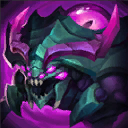 Rift Herald
before 14:00, use it to get quick tower plates. Dragons are arguably better than Rift Herald / plates, but you need to play around your winning lanes rather than forcing early Dragon fights that you're bound to lose.
Rift Herald
before 14:00, use it to get quick tower plates. Dragons are arguably better than Rift Herald / plates, but you need to play around your winning lanes rather than forcing early Dragon fights that you're bound to lose.14:00 - 20:00
Take first tower before the enemy team does, if possible. Assuming one team has been taking Dragons, make sure you focus on dragon control starting around the third dragon spawn. Don't let the enemy get 3 dragons for free, or they'll use the pressure to get either Dragon Soul or Baron on the next spawn. If your team can get 3 dragons, you can force the same dilemma.
Rotate people to take any outer towers that are still up. You should always have your duo lane pressuring an outer tower, not continuing to push bot for the inner tower. Once you have all the outer towers, ward the enemy jungle and steal their camps. You can use the vision control to out-rotate the enemy team to take towers, or catch enemies in rotation. Focus your vision & counter-jungling efforts on the side of the map where the next neutral objective is spawning. Controlling Dragon over Baron is usually easier if Dragon is spawning soon.
20:00 - END
You and your ADC should be near
 Baron
while your
Baron
while your Baron Control
There are three main ways to pressure Baron. In all three cases, vision control is essential. Be sure to buy
Rushing Baron
This is viable if you have high DPS and the enemy team is out of position. If the enemy jungler is dead or near bot lane and most of your team is near baron, you can try to rush it down before the enemy can contest. You can also try to sneak baron if the enemy team doesn't have any vision of the Baron pit and isn't coming to contest. You'll have to stop if the enemy jungler shows up and catches you doing it though, or you'll risk a steal.
With the enemy
Baiting Baron
This is a good option if you have a healer and/or a strong frontliner on your team. Your tank and DPS champions can start hitting baron while your lower DPS teammates zone enemies from the pit. If the enemy can't get close enough, you can finish the baron. Otherwise, turning and killing the enemy jungler is an option, since they'll be weakened from trying to get through your zoners.
Faking Baron
If you have a weak frontline and medium to low DPS, doing Baron becomes very risky without a significant advantage. Clear out the enemy's vision and force them to come check the Baron pit, then pick off whoever comes to check (you might need 2 picks). If you kill the enemy jungler, your team can take Baron without risk of a steal. If you kill the enemy waveclear champion(s), you can force down towers while they're respawning.
A few of my teammates stay to pick off the enemy

We all know the point of the game is to destroy the enemy Nexus, but ending the game isn't as simple as just running it down mid and hoping you kill everyone so you can do that for free. If you find yourself constantly reaching late game despite getting leads early, you may find it difficult to turn those leads into a win. This is both because Nocturne isn't a great late game champion, and because early and mid game leads that aren't translated into wins will usually stagnate, making the game a coin flip of which team wins the last team fight and can run it down to win during the long spawn timers.
In the late game, something as simple as your support getting randomly caught out can be a death sentence. It's not very reliable to win games that go super late, so you'll need to know how to actually close out games once you have a lead and coordinate your teammates so they don't just run around wasting time, letting the enemy team catch up.
Closing with Baron
Baron is one of the best tools for closing out a game. It's available as early as 20 minutes and gives your team massive tower pressure and an edge in fights. A lot of people will waste the Baron buff goofing around, farming or getting caught instead of winning.
The first way to reduce Baron throws is to recall together with your team after taking it. This isn't always optimal, but in most cases you or your teammates can use the recall to refill your resources and spend your gold before the potentially final fight of the game. If you're super close to a big item spike (like 150 gold off of a full item), ping the item in your shop so your team knows you need a moment and go clear a wave or a jungle camp to get the last bit of gold you need, do NOT farm like 500 gold just to finish and item; you don't have time for that.
Once your team is all done recalling and buying, you can assign lanes and pressure the map together. Don't let your teammates stay on the map for extended periods and then recall super late. This wastes a ton of your Baron time, since your team needs to be on the map at the same time to pressure. If one of your teammates does this, ping your teammates back to wait for them to get into position. It's better to wait than to risk a 4v5.
If you have a strong 5v5 team fighting composition with champions like
If your team has high range champions like
If your team has a strong frontline and/or great engage, you may want to simply dive the enemy team when they contest your push. Lower ranged ADCs like
In these situations, your job is just to be present so you can help your team once the fight starts. You may hit the tower if the enemy team is too timid to walk up, but you can usually let your ranged allies and Baron minions do the work while you wait patiently and keep your health high.
This is the safest strategy, but also the least effective. Enemies with strong waveclear and zone control can stall Baron pushes indefinitely or severely delay them to burn the Baron timer down. Getting just 1 mid inhibitor from a Baron is generally not good enough since it gives the enemy team a long time to farm up before the next Baron push. This is why you'll need really strong dive or guaranteed, reliable tower damage from someone like
If you have a strong split-pusher on your team OR you're really strong and can 1v1 anyone on the enemy team, you'll probably want to split your team into a 4-1. Put 4 champions into one lane and 1 champion into another lane to pressure both lanes with Baron.
Champions who can handle multiple enemies and dive solo opponents like
If your team's split-pusher is someone like
The main danger with this option is if an uneven fight starts and you can't properly group your team or disengage the fight. The enemy will try to either force a 5v4 fight or catch your split-pusher and then group up to defend against the remaining 4 members of your team. This also doesn't really work if the enemy has someone who can 1v1 your split-pusher, though in some cases they can still use Baron minions to pressure the tower.
This is much the same as the 4-1 Split strategy, but in this case you'll have two split-pushers a group of 3 champions mid. In most cases, the support and ADC will be two of the three mid champions, while you or one of your solo laners will be the third. Nocturne works a bit better in the side lane here, but he can work mid too since you can R to either side lane.
Your two strongest split-pushers should be in the side lanes. If you have a super strong
This strategy provides the most pressure since you'll have Baron minions hitting all three towers at once, but it carries the greatest risk since it's tougher to rotate between all three lanes, and if the enemy team has strong engage, they may simply engage 5v3 in mid lane and crush your squishy support & carries. For this reason, make sure you either have a lot of split-push pressure, good rotational tools, or strong disengage to keep your lanes safe (especially the group of 3).
If the enemy team has very poor engage, this strategy becomes really good even if you don't have amazing split push champs. The way to beat a 1-3-1 is to force a fight on one of the smaller groups, but if you can't force fights, the pushing team can simply back off whenever the enemy groups against them while the other 2 lanes push.
If you've already taken down an enemy inhibitor, you'll have a super minion wave pushing down that lane. This wave of supers demands enemy attention eventually, or they'll kill the enemy Nexus by themselves (unless they're matched by an enemy super minion wave). You can use super minions as if they're split-pushers on your team. Either have someone empower them with Baron for high pressure pushing, or group your team and wait until an enemy goes to deal with them, then pressure the tower or dive when they're busy clearing the minions.
You can also use super waves to pressure the enemy base while you set up a neutral objective. Stalling a 5v5 around Baron while you have supers in the enemy base puts the enemy on a timer and forces them to either cede Baron or overextend to force a fight immediately.
Picks / Team Fights
When the game goes late, death timers become super long, which gives your team more time to capitalize off picks. If you kill an enemy for free, you can force a 5v4 fight and use your numbers advantage to easily win it. Then, while the enemy team is dead you can push to end.
Smart enemies will back off when one of their members dies for free and try to just wave clear and buy time for their ally to respawn. In most cases, you can use Baron or Elder Dragon to bait the enemy team to fight you (lest they cede the objective for free). If you picked off the enemy jungler, you should be able to burn down the objective and secure it with
In some cases, you don't actually need Baron and can end off of a single pick. Teams with low wave clear can't defend their towers without team fighting, and they won't be able to team fight while they're a man down. Champions like
Winning a straight 5v5 can also net your team a win late game, as long as you have enough DPS from your remaining teammates to kill the enemy structures, and some nearby minion waves to push with. If you can't push to end, take Baron or Elder Dragon instead. Neutral objectives are much better at closing out games than, say, a killing just a mid inhibitor and one Nexus tower.
Split-Pushing & Backdoors
The last way you can win is by split-pushing (or backdooring). In this case, you'll want your split-pusher bottom while you and your other teammates stay near Baron. If the enemy team sends too many people bottom to kill your split-pusher, you can take Baron. If they group 4 or 5 people to Baron, your split-pusher should be able to pressure towers.
It's generally easier to play the late game if your split-pusher has
Backdooring is when your team ends the game while the enemy team is trying to contest a neutral objective (or base race you by pushing your base at the same time). Strong split-pushers can threaten to backdoor in order to secure your team neutral objectives, or they can simply end the game if the enemy team doesn't send enough people to deal with them. This is probably the rarest way to win games and isn't something you can easily do as Nocturne unfortunately. It's still good to keep it in mind as a possibility, as you may have someone on your team who can win the game without you needing to actually win a fight against the enemy team.

Thanks for checking out my
If you want to support this guide, please click the green + button up top, as upvotes will help more people see it. I also read every comment on all of my guides, so if you'd like to share your thoughts or suggestions, please feel free to do so in the Discussion tab.
 | A very special thank you to Jovy for her wonderful graphics used in this guide as well as her help with coding all my guides. All the fancy headers, table of contents and most of the other graphics you see in my guides are from her. Be sure to check out some of her other work at her signature shop and her own guides! |
I'd also like to specifically thank the following people for helping me write, edit and improve this guide:
|
|
|











 24,311,080
24,311,080
 1,027
1,027














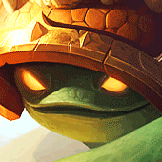
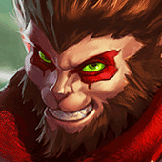
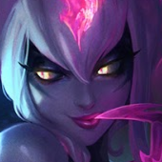
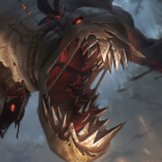
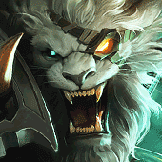
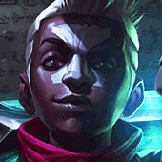
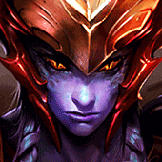
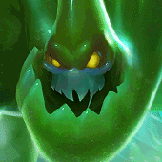
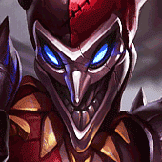
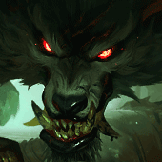
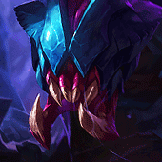

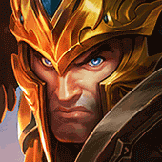
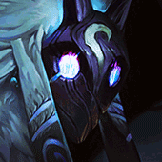
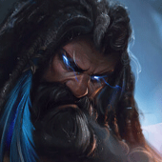
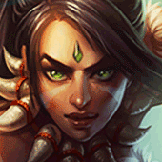
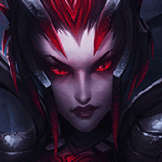
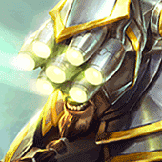
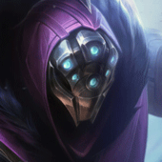
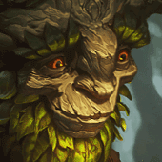
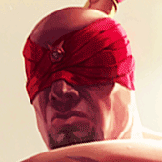
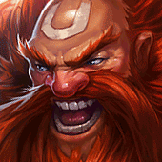
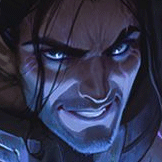
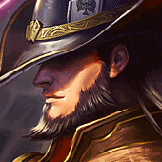
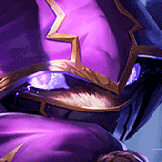
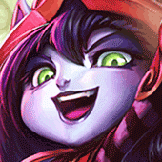
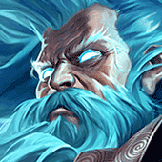
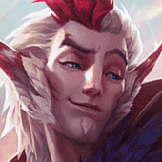
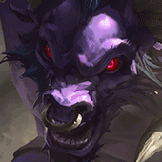
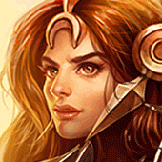
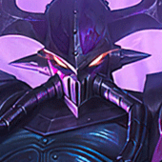
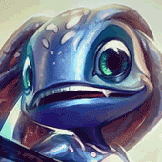
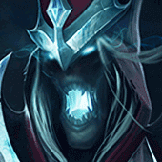
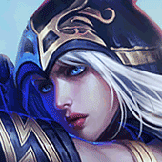
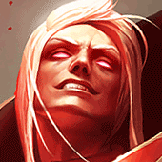
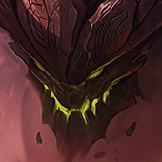
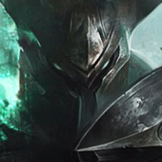

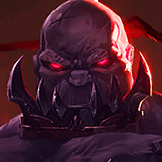
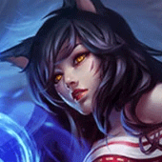
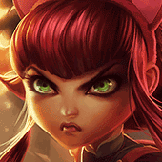
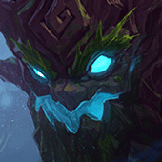

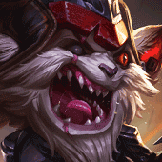
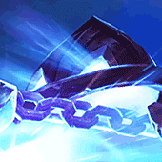
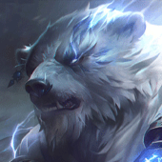
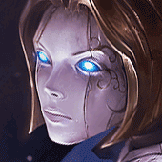
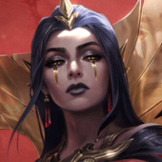
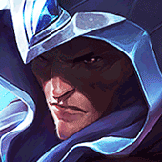
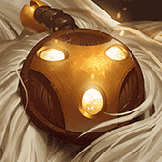
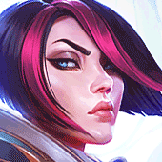
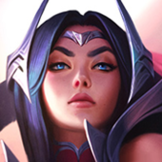
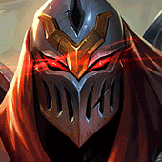
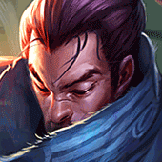





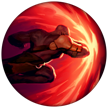









 Twitter
Twitter
 YouTube
YouTube
 Twitch
Twitch
 PayPal
PayPal
You must be logged in to comment. Please login or register.